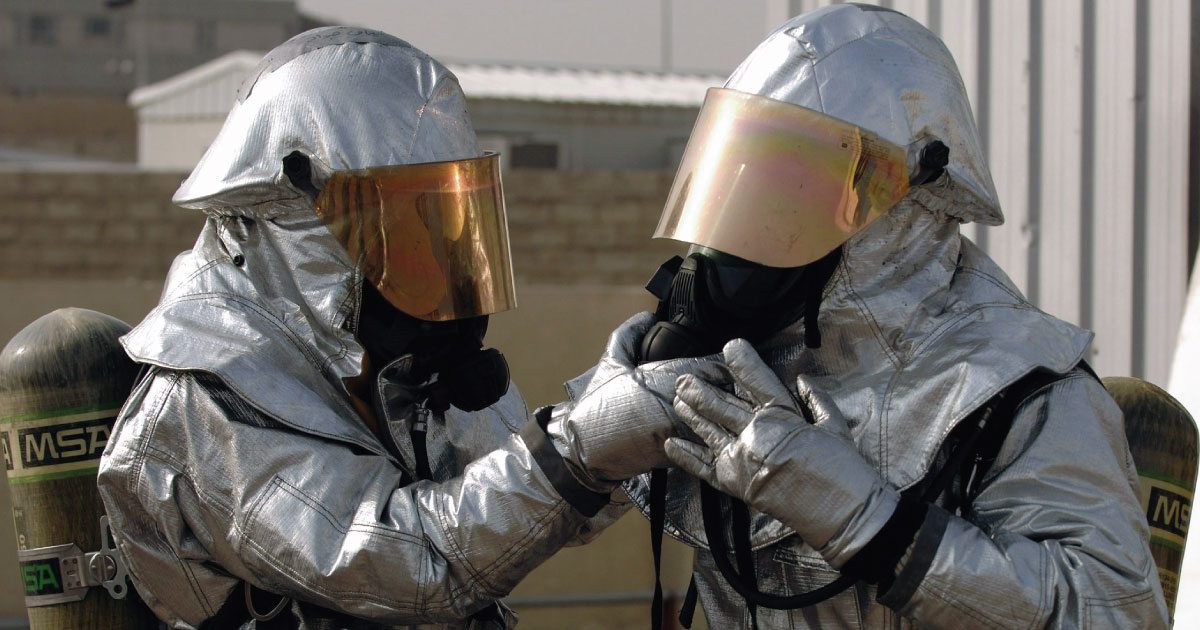Author: Lisa Hyde-Barrett

Global Asbestos Awareness Week
Last week was Global Asbestos Awareness Week. The week is dedicated to educating people about the risks of exposure to asbestos. Since 2004, the Asbestos Disease Awareness Organization has worked with the Senate to pass 12 resolutions declaring the first week in April Awareness Week. “Hear Asbestos Think Prevention,” educates the public about the continued dangers of asbestos. It is important to understand that asbestos related diseases are 100% preventable.
The leading cause of malignant mesothelioma is exposure to asbestos. As we all know, asbestos is not banned in the United States. Alerting people to that fact can only help spread the word that asbestos is still a health hazard in the U.S.
As researchers, scientists and doctors all continue their quest to find a cure for mesothelioma, the fact is that people are still being exposed to asbestos. The time from exposure to asbestos to the development of this aggressive disease is decades – by not banning the use of asbestos, we assure that this dreaded, aggressive cancer will continue to claim victims for many years to come.
The Asbestos Disease Awareness Organization continues to work relentlessly against the political tide to get this issue taken care of. What will it take for asbestos to be banned? The fact that asbestos continues to kill more than 190,000 people worldwide each year does not seem to be enough.
As you go about your usual busy lives, make it a point to tell your friends and family about the facts behind asbestos exposure in the U.S. Spread the word and support the Asbestos Disease Awareness Organization.

Nurse Sees Uniqueness in Each of her Mesothelioma Patients
Seeing patients dealing with mesothelioma at different points in their journey reminds me of just how much still needs to be done in the fight against mesothelioma. Within the last few weeks, I have seen newly diagnosed patients who are hard to identify from their loved ones. Who is the patient? All different age ranges, from 29 to 85, men and women, all starting on their journey, all unique people with different stories. What lies ahead for them? No one knows.
The other day I ran into a patient, a young man who was diagnosed and treated 18 months ago. He had surgery followed by many complications and after a prolonged hospital stay he went home with his family. I was unprepared for what he told me, and was surprised by his physical appearance. He was smaller than I remembered, and he was wearing oxygen. As we talked he confided that there was nothing left his medical team could do for him. Then, his next statement keeps playing in my head, “I only have months left.” How sad for him and his loved ones as they face the final part of his journey with mesothelioma.
That same day I ran into a four-year mesothelioma survivor. He looked great, felt well and was enjoying life. Mesothelioma, like all of life, is a different journey for everyone.
Everyday I wake up I feel privileged to care for patients with mesothelioma. Others in the medical community, whether it is researchers, doctors, nurses, or X-ray techs, all hope to make a difference. We believe we do, but sometimes the reminders that people will die from this disease is harsh and heartbreaking.
The statistics are more than that. Behind each number is a person who we have been fortunate to meet and form a relationship with. The journey continues and everyone just wants to enjoy quality time with their loved ones.

Nurse Wishes Mary Hesdorffer Well As She Retires
The ability to command the respect and admiration of people from all walks of life is not something that is easily accomplished. For the mesothelioma community, Nurse Practitioner, Mary Hesdorffer R.N., of the Mesothelioma Applied Research Foundation, is one person who has been central to the mission of raising awareness for this rare cancer, published research, comforted thousands of patients and family members, and earned the respect of mesothelioma research scientists and clinicians.
As the Executive Director of the Mesothelioma Applied Research Foundation, Mary has dedicated herself to raising funds, and is a huge advocate, for the mesothelioma community to fund research. It would be impossible to list all of the accomplishments that Mary has achieved over the years. What sums it up is a tribute from a patient’s family member on the Meso Foundation’s web site, “Mary took the confusion out of the diagnosis.”
The Mesothelioma Applied Research Foundation has an annual conference that includes scientists, researchers, patients and families. The foundation, the only non- profit for mesothelioma is dedicated to research to finding a cure for mesothelioma. This year the conference will be held March 27 – 29 at the National Institutes of Health in Bethesda, Maryland.
In addition to hearing the latest updates on mesothelioma research, the conference will be a time to wish Mary Hesdorffer well. Mary has been with the Meso Foundation since the beginning. In her various roles over the years, she has been the one that the mesothelioma patients and families know. With countless hours, phone calls, and time dedicated to the mesothelioma community, Mary has been the go-to person for information, support and advocacy. Whether speaking at conferences, conducting support groups or reaching out to patients, Mary has been a constant, familiar face for mesothelioma families and the medical community. Everyone in the mesothelioma community knows Mary.
We wish Mary well in the next phase of her life. She will never be replaced or forgotten for all she has done, and will most certainly continue to do, for the mesothelioma community. Well done!

Help End Asbestos Exposure & the Risk of Mesothelioma
On September 11, 2001, we were all changed forever by the terrorist acts against our country. The first responders involved in the rescue and cleanup of the debris at the World Trade Center in New York, as well as the first responders and victims at both the Pentagon and Shanksville, Pennsylvania sites, continue to be affected by the attacks with various health issues. In response to the attacks that day, the World Trade Center Health Program has been established to follow the health of the responders and survivors of that day from all three sites.
It is estimated that 400 tons of asbestos, used in the construction of the Twin Towers was released into the Manhattan area in the form of a dust cloud. Now, fifteen and a half years later, asbestos continues to be imported into this country with an estimated 100 tons imported in 2016. The latency period for mesothelioma, a cancer caused by asbestos exposure, can take from 15 to 60 years. According to the U.S. Environmental Protection Agency, no amount of asbestos exposure is considered safe.
The World Trade Center Health Program has treated over 65,000 rescue and recovery people.
The cancer rate has increased among firefighters who were at ground zero by 20% compared to other firefighters who were not at the site. A recent study done by the National Institutes of Occupational Safety found that firefighters have a rate of mesothelioma two times greater than the average. Firefighters have a dangerous job every day. Worrying about getting a dreaded cancer should not be added to their already heavy burden.
The Asbestos Disease Awareness Organization (ADAO) is holding its 13th annual International Asbestos Awareness and Prevention Conference April 7-9, 2017 in Washington D.C. ADAO’s purpose is to raise awareness, educate, and activate the community about the dangers of asbestos. For more information visit: www.asbestosdiseaseawareness.org.
The survivors, the rescuers and recovery workers continue to deal with the aftermath of 9/11 with ongoing health issues. Everyone who is grateful for the support of our first responders should be proactive and get involved in helping eliminate the asbestos risks that affect Americans. Help ban asbestos in the U.S.

Nurse Explains Pain Medications for Mesothelioma Patients
No one wants to be in pain. Pain can be debilitating and it can prevent us from enjoying our lives. Controlling pain often requires a multidisciplinary approach. The approach can include medication, guided imagery, meditation and other therapies.
The definition of pain by the International Association for the Study of Pain is, “An unpleasant sensory and emotional experience associated with actual or potential tissue damage, or described in terms of such damage.” Pain experience is individual and unique to the person experiencing the pain.
This week we saw a mesothelioma patient who was recovering from surgery, but did not want to take any pain medications once he left the hospital. The reasons for pain medications are multi-faceted. They can help reduce the chances of pneumonia, that can be a result of not being able to take a deep enough breath. They can help prevent blood clots that form when patients cannot move around enough to prevent blood clots. Pain medication can help a patient sleep better. Poorly managed pain can lead to complications and a longer rehab.
Why didn’t our patient want to take the pain medication? He wanted to get better, he wanted to walk, he wanted to sleep at night, he wanted to go home. What he didn’t want was to become addicted to pain medication. He had heard that is where some people start on the road to addiction and he was not going down that road. A study published in JAMA in 2016, can help quell those fears. According to the researchers, just “0.4% of patients continue to receive prescriptions for opiates at one year.” Previous studies report only about 3% still taking opioids after three months.
Generalizations do not work when managing pain. Like mesothelioma, every person’s disease is different, everyone’s reaction to pain medication, how it works for them, whether they need more or less, is something that should be individualized between the patient and his doctor. The control of pain and it’s side effects, will make for a better recovery, less complications, and get you back to your life.
It is important to discuss your concerns with your care team. Communication with your team about your pain and whether it is improving , changing, or increasing will help your recovery, and improve your patient experience. One size does not fit all! Discuss with your team your concerns and fears- it will lead to a better experience.
Free Mesothelioma Patient & Treatment Guide
We’d like to offer you our in-depth guide, “A Patient’s Guide to Mesothelioma,” absolutely free of charge.
It contains a wealth of information and resources to help you better understand the condition, choose (and afford) appropriate treatment, and exercise your legal right to compensation.
Download Now